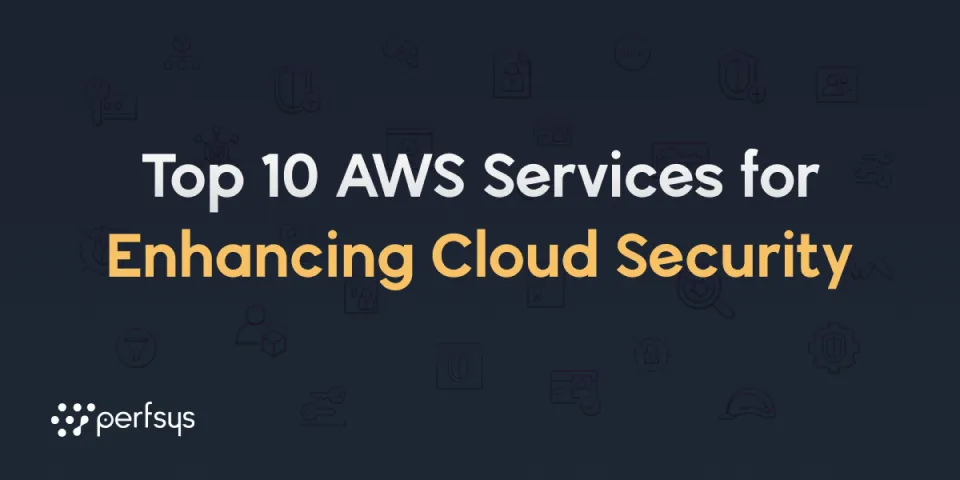Top 10 AWS Services for Enhancing Cloud Security
Contents
- - Introduction
- - AWS Identity and Access Management (IAM)
- - AWS Secrets Manager
- - AWS Key Management Service (KMS)
- - AWS Web Application Firewall (WAF)
- - AWS Shield
- - Amazon Macie
- - Amazon Inspector
- - Amazon GuardDuty
- - Amazon Detective
- - AWS Security Hub
- - Conclusion

Introduction
In the era of cloud computing, securing your digital assets has become a crucial mission for businesses worldwide. Amazon Web Services (AWS), a leading cloud service provider, offers a range of tools designed to strengthen your security posture. This article delves into the top 10 AWS services that come in handy when securing your data and operations in the cloud.
1. AWS Identity and Access Management (IAM)
IAM is essential for managing access to AWS services and resources. It allows you to control user permissions and roles, ensuring your employees and applications only access necessary resources. Key features include Multi-Factor Authentication (MFA) and detailed IAM Credential Reports.
How to use: Implement IAM in your workflow to define permissions and roles, ensuring each user and entity has only the necessary access following the least privilege principle, thereby reducing internal security risks.
2. AWS Secrets Manager
This service helps you avoid common pitfalls like hardcoding credentials in source code. It helps manage and protect secrets such as database credentials and API keys. Secrets Manager encrypts these secrets and integrates with AWS KMS for enhanced security.
How to use: Use AWS Secrets Manager to securely store and manage your database credentials, passwords, and API keys. Automate the rotation of these secrets to reduce the risk of unauthorized access.
3. AWS Key Management Service (KMS)
KMS simplifies the management of encryption keys used to secure data. It integrates with other AWS services, including S3, DynamoDB, Lambda, Certificate Manager, and others for data encryption control.
How to use: Incorporate KMS into your data protection strategy to create and manage encryption keys, ensuring the security of your data across AWS services and in your applications.
4. AWS Web Application Firewall (WAF)
AWS WAF protects your web applications from common exploits. It allows you to create customizable rules to filter web traffic and block malicious activities.
How to use: Integrate AWS WAF with your web applications to define rules that filter and block potentially harmful web traffic, protecting your applications from SQL injections, cross-site scripting, pervasive bot traffic, and other exploits.
5. AWS Shield
Shield is a DDoS protection service that safeguards AWS applications with automatic threat detection and mitigation. It helps against common flood attacks such as SYN flood, DNS Query flood, UDP reflection, and HTTP flood attacks.
How to use: Employ AWS Shield to automatically protect your applications from DDoS attacks, ensuring minimal downtime and maintaining performance and availability.
6. Amazon Macie
Macie uses machine learning to identify and protect sensitive data in AWS, particularly within S3 buckets. It evaluates security and access controls and provides notifications of potential risks.
How to use: Utilize Amazon Macie to monitor and protect sensitive data stored in S3 buckets, maintaining compliance (e.g., for the Health Insurance Portability and Accountability Act (HIPAA) or General Data Privacy Regulation (GDPR)) and addressing data security risks effectively.
7. Amazon Inspector
Inspector is a vulnerability management service that scans AWS workloads for software vulnerabilities and unintended network exposures.
How to use: Integrate Amazon Inspector into your security audit routine to continually assess your AWS resources, such as Lambda, EC2 instances, ECR container images, etc., for vulnerabilities and ensure ongoing security and compliance.
8. Amazon GuardDuty
GuardDuty is a threat detection service that checks for suspicious activities and unauthorized behavior using machine learning and anomaly detection. It can analyze numerous data sources, including AWS CloudTrail logs, Amazon VPC Flow Logs, DNS query logs, Amazon S3 data events, etc.
How to use: Implement GuardDuty to monitor your AWS environment for unusual API calls, unauthorized deployments, leaked credentials, and other potential threats.
9. Amazon Detective
Detective makes it easier to investigate security issues, utilizing log data from AWS resources and advanced analytical tools. It automatically collects logs and builds linked data sets to help you trace back the reason for security issues.
How to use: Adopt Amazon Detective for in-depth analysis and swift investigation of security incidents, leveraging its data collection and analysis capabilities for effective root cause identification.
10. AWS Security Hub
Security Hub offers a comprehensive view of your security state in AWS, aggregating and prioritizing security alerts from various AWS services. It automatically checks your account against the AWS Foundational Security Best Practices standard.
How to use: Incorporate AWS Security Hub into your overall security management to centralize and streamline the security monitoring, enhancing your ability to respond to and remediate potential security issues.
Conclusion
These top 10 AWS services offer a comprehensive suite of tools to strengthen your cloud infrastructure against security threats. By integrating these services into your workflows, you enhance your security posture and streamline the management of security tasks, ensuring a robust and proactive defense against the evolving landscape of cyber threats.
